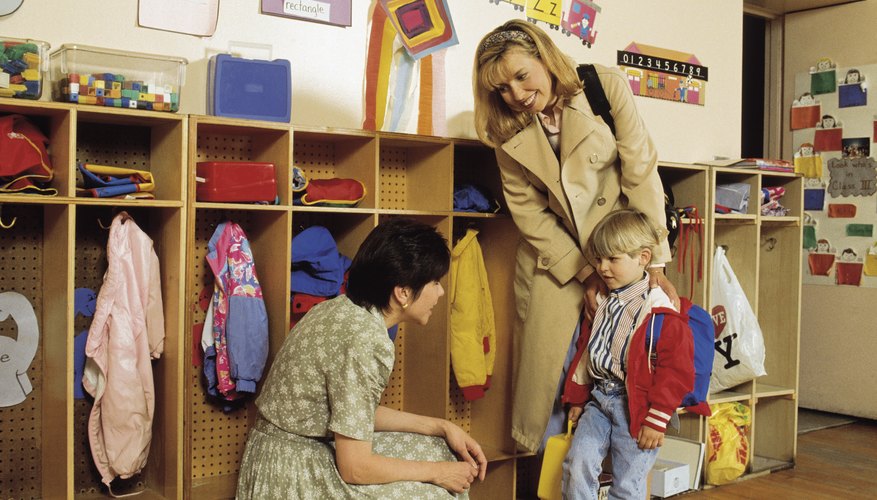There is a popular statement that says, “Teachers touch lives forever.” But as a kindergarten teacher I always say, “Children touch teachers’ lives forever”.
When the years accumulate, it is difficult to remember which child was in which class in any given year. But for me, most names and faces are familiar and can be recalled, even after twenty-three years. When I run into these children of the past, the oldest now thirty, I need a little help to place their adult faces with the one in my memory. Usually, it isn’t too hard to see beneath the beards and makeup.
There is one face however, that will always stay the same. It belongs to Matthew. Every child is special in his or her own way, but one unique little boy with a bright cheery smile and dancing brown eyes has changed my heart forever.
Five-year-old Matthew loved to draw trains, apple trees, friends and animals. As his journal pages accumulated, it became more obvious that he also had drawn a sun in every picture. In asking Matthew about the sun, his answer seemed sensitive and thoughtful for one so young. He said, “Sunshine brings happiness, and I love to make people happy.”
That affirmation was so true about Matthew. All the children liked him because he was considerate, friendly, and always ready to conquer each day’s activities with a smile and love that he shared with everyone.
One day, he and his friend Michelle were taking a stroll with the fruit and vegetables from our dramatic play area. When asked what they were pretending, Matthew responded, “We’re taking sunshine and food to sad people.”
Matthew loved to sing. Our class has many songs we sing including: “The More We Get Together” and “The Little Red Caboose”. But the most popular song was Matthew’s favorite… “Mr. Golden Sun” by Raffi:
“Oh Mr. Sun, sun, Mr. Golden Sun,
Please come out today.
These little children are asking you,
to please come out so we can play with you,
Oh Mr. Sun … please come out today!”
On the last Friday of October, Mr. Sun was not shining. In fact, it was cold, windy, rainy and dreary. The leaves were blowing off the trees and circling around the corner of the school building in mini-tornadoes.
The children were especially active and being a Friday, the half-day was a welcomed relief. I usually try to end the day with a review of activities, and leave in a relaxed manner. Today was different. We were late. The art lesson lasted longer than I expected. Notes home and projects had to be loaded in backpacks before the children ventured out into the weather. The bell rang…we were really late.
Because we were hurrying, I broke one of my cardinal rules of giving each child a last hug as they walk out the door. I do not remember hugging Matthew after helping him zip his coat and I missed the opportunity to give one more hug to Mr. Sunshine on that rainy afternoon.
Late that evening, Matthew and his father were driving north to visit Grandma. They never arrived. Their truck was found the next morning down an embankment against a grove of trees. The police reported that the vehicle went out of control and slid on wet leaves.
Our class’ little Sunshine Boy died on a cold, dark, rainy night. A heavy sadness clouded our thoughts. Even the bright sunshine couldn’t mend our broken hearts.
Time has passed, and now each morning as I enter my kindergarten room, I wink at Matthew’s picture on the wall. His bright smile again fills my day with sunshine. Loving eyes watch for everyone to treat each other with kindness, warmth, love and respect the way he always did.
Matthew has touched my life forever. Because of him I will never again sacrifice important ideals for any reason and always follow my heart when caring for and concerning my children.
It seems as if there is more sunshine these days. Maybe, just maybe, a little angel is blowing the clouds away, so Mr. Sun can come out to play.
Author’s note in 2001
Matthew should be in fifth grade. Last year I received three letters from former students that were in his class. As a writing assignment their fourth grader teacher was making a “Teacher’s Wall of Fame” and these little girls choose their kindergarten teacher for their entry. The letters were touching and one especially talked about how she still remembered Matthew which I thought was quite amazing, since she had just turned 5 at the time.
As a part of the healing process, I wrote Matthew’s story, the children drew pictures of Matthew and themselves, we planted a tree in the school courtyard, and the PTC and I purchased a series of Franklin books for the library in Matthew’s honor. We put the story and pictures in a “Remembering Book” for Matthew’s Mom, the apple tree blooms every spring and of course children love reading the Franklin books.
Author’s note in 2020
**This story was written and published in the December 2001 issue of the Teacher’s Gazette. Matthew should have graduated from high school, had a new girl friend, started a new job or have gone on to college.











